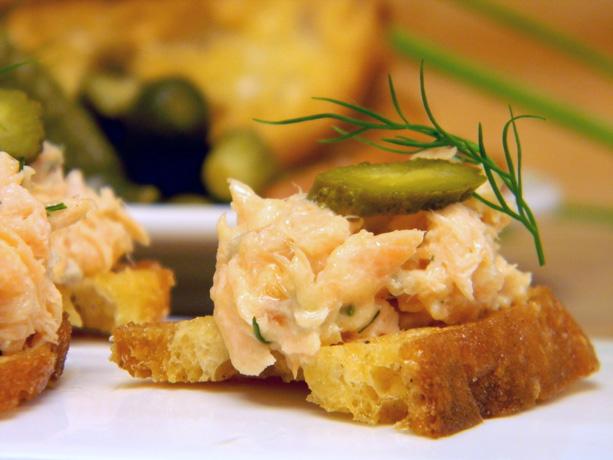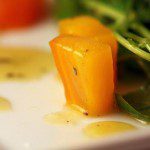As a holiday gift to our readers, chef and restaurateur Ris Lacoste wanted to answer your culinary queries. Thanks to everyone who wrote in with their questions. Here are our answers, which we hope will help you through the holiday season with a few new tricks up your sleeves. For more Q&A visit us at Georgetowner.com.
Dear Ris…
I’m thrilled to see golden beets in the produce aisle, and I love to roast ‘em. Do you have any ideas for seasoning them or for pairing them with other vegetables? –Victoria, Eastern Market
Beets are like candy to me, and I try and think of them as such. They mix so well with almost anything, to decadent conclusions. I like mixing them with citrus, goat cheese, arugula, walnuts and sherry. One of my favorite ways to eat them is roasting them and serving with sweet pickled herring, brown bread, apples and horseradish cream.
The real beauty of golden beets, if you ask me, is that their colors don’t run like their red counterparts. This paves the way for many visual possibilities.
Beet vinaigrette is a refreshing addition to salads, grilled fish and roasted vegetables. Just roast, peel and dice a handful of beets and mix with the vinaigrette—pretty simple! Here are a couple tasty ways to go about the dressing:
1. Mix with equal parts sherry vinegar and walnut oil, and season with salt and pepper.
2. Mix with ginger juice, rice wine vinegar, mirin, a balance of sugar and a dash of oil.
If salt acts to move water across membranes, how is it that brining results in a moister turkey?
–Margaret, Woodstock, VA
Whether we’re talking turkey or any other type of lean poultry or pork, here is the basic rundown of the brining process:
Brining will result in a better-seasoned, moister cut of meat. It disrupts the structure of the muscle filaments in the protein cells, a process known as denaturing. The water, carrying the salt, sugar and all the flavorings, is diffused from the brine into the meat, and the interactions of the salt and proteins result in a greater water-holding capacity in the muscle cells.
As the salty water is absorbed, the meat’s weight increases with moisture content. In the cooking process, all meat loses weight in moisture, thus in brined meats, the loss of moisture is significantly decreased. And because brines work from the outside in, they have their earliest and strongest effects on the areas most likely to be overcooked: the meat closest to the outside. So even a brief, incomplete soaking can make a big difference.
As a chef, my knowledge of brining comes from practical experience and results. To help explain this process, I relied on Harold McGee’s “On Food and Cooking” and “Cook’s Illustrated” magazine, both great sources for the science of cooking. I cannot recommend them enough for anyone interested in the “hows” and “whys” of the kitchen.
Do you have any ideas for raw dishes using winter fruits and vegetables? My mom makes a raw cranberry sauce that’s to die for, and I’m wondering what other possibilities are out there.
–Mema, Paoli, PA
I couldn’t agree more about raw cranberry dressing—it really is something special. I had a delicious variation this Thanksgiving made with lemon juice and jalepenos. Here are some other raw winter vegetable recipes that will hopefully keep you happy until the spring harvest:
Brussels sprout coleslaw: shred Brussels sprouts as you would cabbage and mix with your favorite coleslaw dressing. Voila! My go-to coleslaw dressing is a mix of mayo, tarragon vinegar, sugar, fennel seed, caraway seed, salt, pepper, and I usually throw in julienned carrots and scallions.
Celery root remoulade: julienne celery root and mix with capers, lemon, tarragon, mayo, salt and pepper. If you want something a bit sweeter, toss in julienned apples, sweet pickles and cider reduction mayonnaise (reduce apple cider by half, chill, and add to mayo to taste). It is great with pork chops and roast chicken, and crab cakes in the summer. This dressing would also be great with the Brussels sprouts. Think about adding walnuts. Be creative!
Baby kale salad with a honey mustard dressing is also a tasty—and exceedingly healthful—winter treat. Almost nothing beats the nutritional value of raw kale. It’s really a super food, and if you can find it fresh at a farmer’s market, it is very tender. Add to it roasted beets and goat cheese for a wonderful winter lunch.
You can also take celery root, cauliflower or carrots, cut them into chunks or thin rounds, and dress them with straight vinaigrette with an extra dash of vinegar and let them soak for an hour, then season to taste with salt and pepper. The copious amount of acid “cooks” the vegetables, and the result is a bright flavor combined with a fabulous crunch. Use as a side salad to anything.
With Christmas coming, the biggest challenge for me is planning the food! Do you have any holiday menu items that have components you can prepare ahead of time? Even things for meals on Dec 23rd or 27th would be great. I have two young children that want my attention, and a mother-in-law who is very critical. So if I can have the food set so that I can be with my kids while appeasing the M-I-L, life would be much smoother!
–Susie, Durham, NC
That’s a tall order, for sure! First things first: I’d have a pot of soup on the stove and crusty bread ready to go. Any hearty soup with good bread is a failsafe method to satisfy the stomach and the soul.
Also, always keep some house-made vinaigrette on hand to pour over raw vegetables, salads, or use as a marinade for chicken and meat. Something as simple as that lifts ordinary dinners and lunches into the realm of real cuisine.
Now, as for appeasing the kids and the in-law… My advice would be to make something that can be stored in the freezer, so on the day of all you have to do is throw it in the oven, spend time with your family, and pull it out when it’s ready to eat. A good mushroom-spinach lasagna or a sweet potato lasagna with parmesan, ricotta and tomato are good options. You can even portion out servings in mini loaf pans when you first cook it, and reheat them as needed.
As a roast option that is fabulous for entertaining, might I recommend my individual, make-ahead Beef Wellingtons with mushroom, spinach and blue cheese stuffing. This dish really works—I’m planning to serve it on Christmas Eve at my restaurant. They’re an elegant dinner that your mother in law will love, and you can make and freeze them well in advance.
For the recipe, go to FineCooking.com and enter “Ris Lacoste, Beef Wellington” into the search bar. I wrote the column a few years ago, but I still rely on it all the time, and the recipe has never changed. Best of luck!
I host a holiday dinner party every year for about 40 people, and I’m always so focused on the meal that I neglect to put out anything exciting to munch on while everyone is mingling and sipping cocktails. I need a couple of hors d’oeuvre ideas that can be assembled quickly, aren’t too messy to eat, and will impress my guests!
– Caroline, Annapolis, MD
Passing by your local cheese shop is a great place to start. My standby, no-work, go-to starter is pairing a fabulous cheese with dried figs, olives, Marcona almonds, salamis, Dijon mustard and a baguette. The key here is searching out the right ingredients, finding a balance between the sweet, salty and savory. It is elegant and simple—exactly what a busy hostess needs.
Cowgirl Creamery, Cheesetique, and Whole Foods Georgetown are three of my favorite cheese shops in the area.
If you feel like doing a little more work, one bite of heaven that I rarely forgo is my salmon rillettes.
These are quick-to-make, delicious hors d’oeuvres, the recipe for which you can easily adjust to serve any number of people. Your guests won’t be able to stay away from them. Follow this basic:
Ris’ Salmon Rillettes
The basic ratios for this recipe are equal parts smoked salmon and fresh salmon fillet, and ¼ of the total salmon weight in room temperature salted butter. For example: ½ lb. smoked salmon / ½ lb. fresh salmon / ¼ lb. butter.
Gently roast the fresh salmon with olive oil, lemon, salt, pepper and fresh thyme. Refrigerate until ready to use. Finely dice the smoked salmon, place in a large bowl, and use your hands to mash together with the room temperature butter, until the mixture is homogenous. Flake the chilled roasted salmon into the bowl, without mixing. Add lemon zest, lemon juice, lots of fresh diced shallots, chopped chives, salt, pepper, a dash of Tabasco, and mayonnaise—preferably homemade lemon mayo with a touch of Dijon. Mix and fold very gently, ensuring the flakes of fresh salmon remain intact, thus creating the “rillettes” effect. All seasonings need to be adjusted depending on the volume of salmon.
Place the rillettes on a buttered, toasted slice of baguette with a fork, making sure to maintain the salmon’s flaky texture. Garnish with a slice of cornichon, and a dill sprig if desired. The acidity of the cornichon cuts through the richness of the rillettes to give it a wonderful bite.
- Salmon Rillettes





